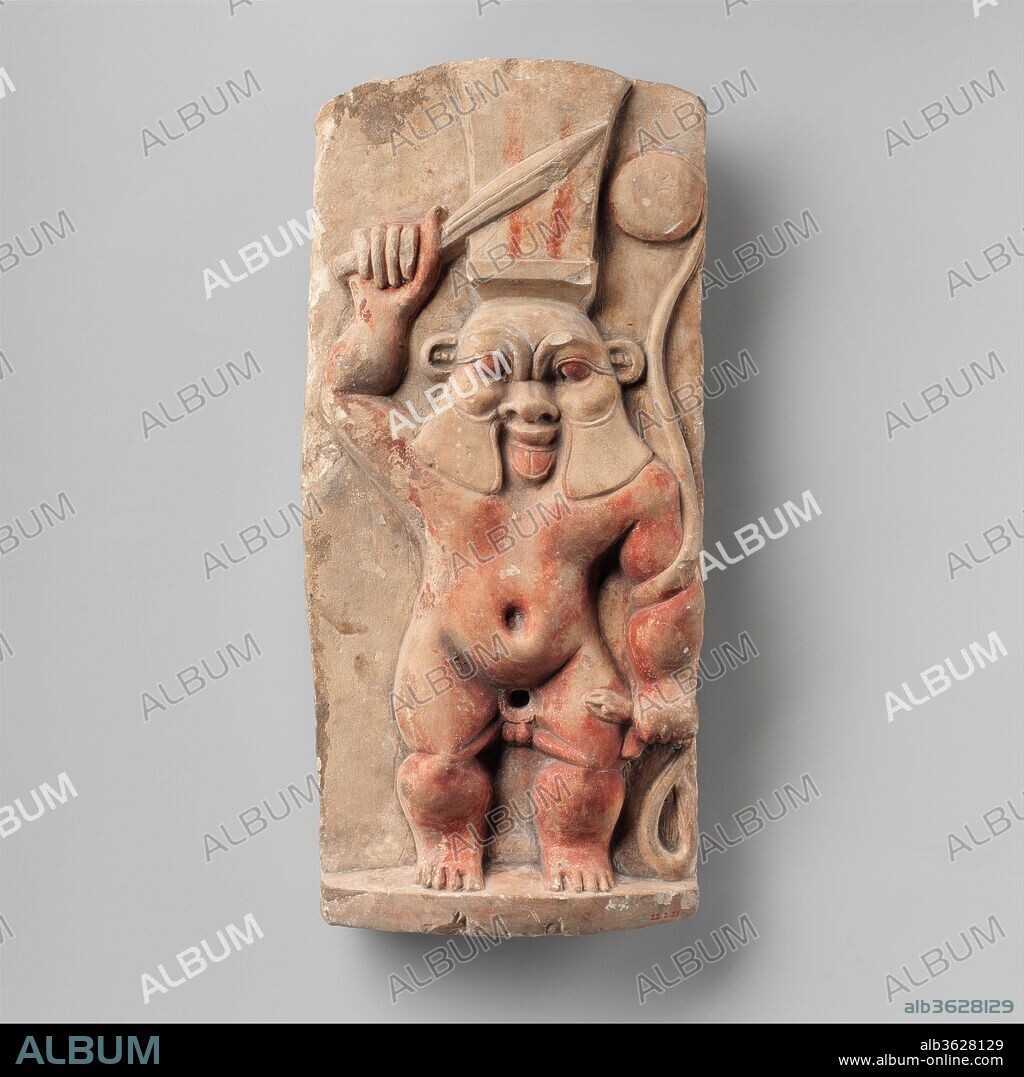alb3628129
Stela of the God Bes

|
Añadir a otro lightbox |
|
Añadir a otro lightbox |



¿Ya tienes cuenta? Iniciar sesión
¿No tienes cuenta? Regístrate
Compra esta imagen

Título:
Stela of the God Bes
Descripción:
Ver traducción automática
Stela of the God Bes. Dimensions: H. 38.7 cm (15 /14 in); w. 17.7 cm (6 15/16 in). Date: 4th century B.C.-A.D. 1st century.
Bes waves a knife in one hand and in the other grasps a snake, whose long tail curls up toward a round shape, probably the god's tambourine. A hole remains where a large erect phallus would have been inserted. Considerable traces of paint remain; the characteristic lines on the god's face and curls on his beard may have been added in paint.
A few limestone reliefs and terracottas of this type exist. One in Amsterdam comes from the "Bes Chambers" excavated in the Anubeion at Saqqara. The Bes chambers were decorated with large terracotta wall reliefs of Bes with a large phallus and accompanied by a smaller female figure. They are theorized to have been places where pilgrims came to stay and sleep in order to receive divinely inspired dreams, a practice known as "incubation," prophesizing fecundity. This relief could have functioned in such a place, or it could have had the same beneficial effect in a less specialized context.
Técnica/material:
Limestone, paint
Periodo:
Ptolemaic or Roman Period
Museo:
Metropolitan Museum of Art, New York, USA
Crédito:
Album / Metropolitan Museum of Art, NY
Autorizaciones:
Modelo: No - Propiedad: No
¿Preguntas relacionadas con los derechos?
¿Preguntas relacionadas con los derechos?
Tamaño imagen:
3981 x 3982 px | 45.4 MB
Tamaño impresión:
33.7 x 33.7 cm | 13.3 x 13.3 in (300 dpi)
Palabras clave:
 Pinterest
Pinterest Twitter
Twitter Facebook
Facebook Copiar enlace
Copiar enlace Email
Email
